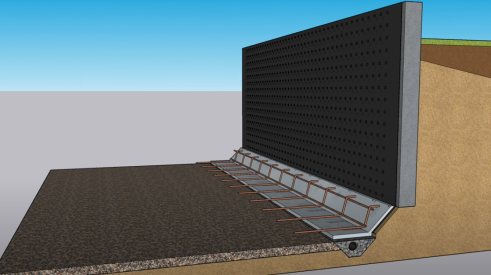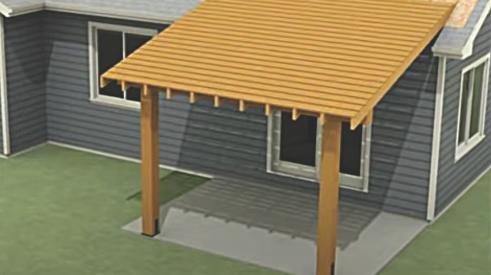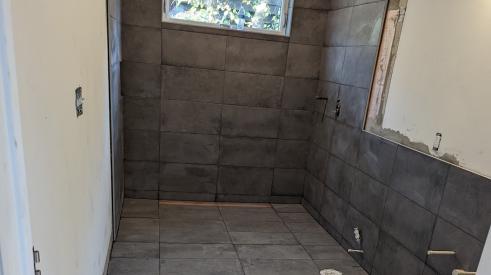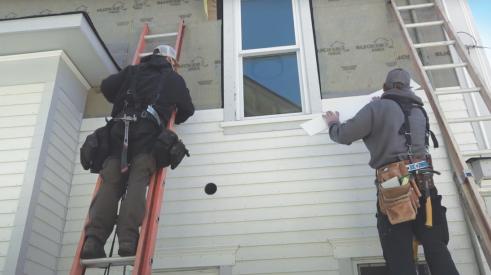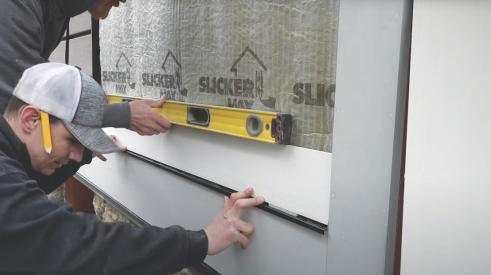The shingles are high-nailed and the installers didn’t even use a peel-and-stick flashing. A low-ball job if ever there was one. Nonetheless, the homeowner insists that it’s product failure. The manufacturer agrees to credit the homeowner $4,000 on the shingles and $8,000 on the labor. The remainder of replacement cost comes to about $16,000. Our company is contacted because we are the preferred installer for that manufacturer in the area. I photograph the roof and prepare a proposal. This is October. In January I send a finalized proposal and we set an appointment to discuss it.
Foot Dragging 101
The house is an hour away. I get there and the homeowner isn’t there. He shows up an hour later and we sit down with the proposal. Now he’s going through the paperwork—manufacturer correspondence, product sheets, contract—as if he’s seeing it for the first time. He moves through the contract paragraph by paragraph, finding something objectionable in each one.
By the time we get through the contract it’s about 10:30 p.m. Now he says that, actually, he wanted a different shingle from the one in the proposal. I point out to him that the one he wants is included as an option and is priced. I show him where. He nods. So it is, so it is, he says.
And now, out of the blue, he pulls out an estimate from a low-baller. The homeowner tells me that he had another guy out to his house and that guy will do the job for this much less. “Wait a minute,” I tell him. “You’ve given me the go-ahead, and I’ve driven all the way out here, and now you want to compare my company’s proposal to a one-truck operator’s estimate? A guy who, by the way, is not certified to install this product?”
So the work comes to $16,000 and the homeowner writes a $1,000 deposit check. As I’m walking out of the house, a voice in my head is saying: Do you really want the job?
How to Avoid Paying
Fast forward to April. The roof is long done, but the homeowner, who owes 15 grand and change, is inventing new reasons not to pay the invoice.
In the roofing world, most companies take a one-third deposit, another third when the job starts, and the last third on completion. We take 10 percent at signing and get paid when service is rendered.
I call and email the homeowner asking: When will we get our check? His first tactic is to ignore all inquiries. After several weeks I get an email. He’s in Switzerland, he says, which is why he hasn’t gotten back to me. His email directs me to call his wife and says that she will provide payment. “I can even wire you the money,” he writes.
Weeks go by. No wife. No wire. No nothing. I call and email again. Suddenly, he returns my call and now he wants a copy of the contract, certification that the roof was inspected by the township, and a signed waiver of liens. Somewhere in the course of all these conversations, I come to understand that a divorce is in the offing.
When people get divorced, one or the other party often declares bankruptcy. Meaning, as far as that $15,000 goes, if you want any part of it, step in line.
I tell him that I’m not signing a waiver of liens until I have his check and the check is deposited. Of course, he also wants to know where the money will be deposited and my bank account number.
Out to Screw You
There’s a certain kind of guy who thinks everybody is out to screw him. The reason he believes that is because he’s out to screw everybody else. The advantage, in this case, is all his. If a contractor takes a deposit check and doesn’t install the job, that’s called deception and he can go to prison. If a homeowner contracts for a job with no intention of paying, that’s called a “dispute,” and it never makes it into the media.
I wish I could go back to the night when he picked at the contract, wanted to switch shingles, and pulled out an estimate from a low-ball contractor. Here’s what I’d say: “You seem like someone who’s been raked over the coals at some point in time. Do I look like the person who did it? You called me out here because this was a done deal. I’m showing you a consumer-friendly contract that hundreds of people have signed. This is the paperwork we’ve been using for years. If there’s some reason why you don’t feel you can trust me, or our company, then maybe we are not the contractor for you. We expect people to trust us and we trust people to pay us.”
A lot of salespeople are afraid to say that. You want the job and you want to close now. But sometimes it pays to take the long view. If I had, however that homeowner had responded, I’d be ahead of the game right now.
Why is it that if a contractor takes money without installing, that’s called “deception,” but if a homeowner refuses to pay for finished work, that’s called a “dispute”?
Add new comment
Related Stories
How to Retrofit Foundation Footings
To make a low-height basement a more comfortable living space, this remodeler digs deeper but needs to add support to do so
Crawl Spaces to Basements: Proceed with Caution
Converting a crawl space to other uses can upgrade a home and add significant value, but when done incorrectly, it can also be disastrous
Webinar: Project and Trade Management Musts—The New American Remodel 2023
Access the webinar here to learn project and trade management lessons from The New American Remodel 2023
How to Attach a Patio Roof to an Existing House
A graceful integration may mean more work but improved functionality and aesthetics
How To Improve Energy Performance in Existing Attics
There’s more to insulating the attic than attic insulation; there’s venting, air sealing, and misery
Model ReModel 2022: A Case Study in Sustainable, Thoughtful Construction
The eighth annual Model ReModel project features an accessory dwelling unit, designed for aging in place, attached to a 19th-century Victorian
Installing a Curbless Shower
Model ReModel 2022 features an ADA-compliant bathroom. The contractor shares the install process
How to Install PVC Bevel Siding Over Rainscreen
It’s a lot like installing wood bevel siding, except it won’t warp or rot. And it expands and contracts differently and for different reasons
Understanding How PVC Trim Moves
Anybody who’s used PVC in an exterior application knows that it moves seasonally. Just like wood, right? Not exactly




